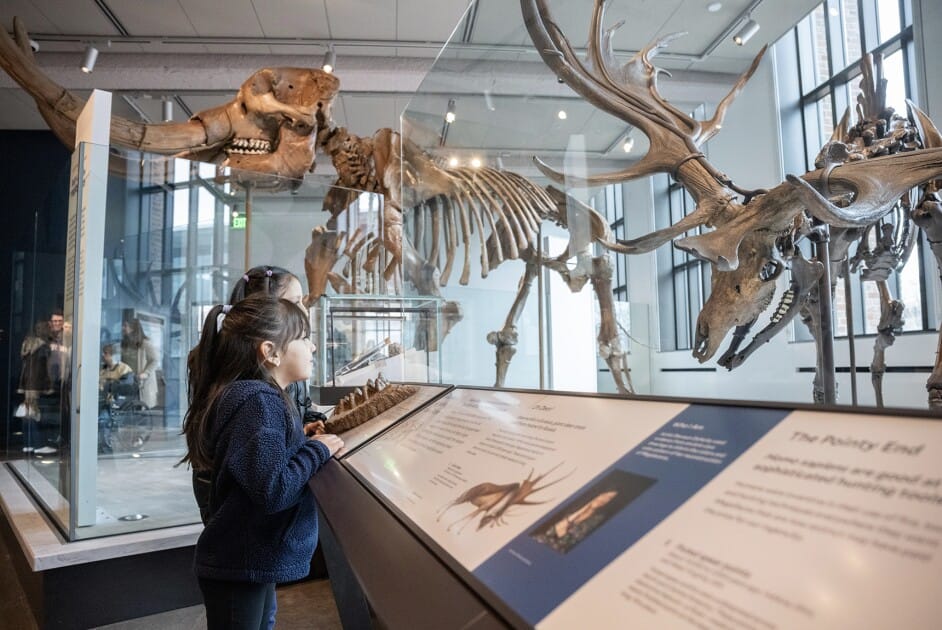Federal funding cuts are starting to hit U.S. classrooms in unexpected ways, not just through delays from the U.S. Department of Education but through the loss of grants from cultural and library institutions that quietly support K-12 education.
The Institute of Museum and Library Services (IMLS) and the National Endowment for the Humanities (NEH) are among the agencies facing deep reductions.
A March executive order called for the dismantling of the IMLS to the “maximum extent consistent with applicable law.” In April, the Department of Governmental Efficiency slashed NEH grants to thousands of institutions—which include nonprofits, museums, and universities—in a move that a federal judge has since declared unlawful, but is still being debated in the courts.
While NEH and IMLS occasionally fund public schools directly, most of their dollars reach educators indirectly, supporting libraries, museums, literacy programs, and teacher training. In the 2024 fiscal year, IMLS awarded about $270 million in grants to museums, libraries, and states—funding that supports statewide databases, interlibrary loans, and other resources that impact K-12 schools.
NEH grants have often gone to teacher professional development workshops run by museums and nonprofit institutions.
“It is the perfect storm for educational catastrophe,” said Amanda Kordeliski, the director of libraries and instructional technology for the Norman public schools in Oklahoma and the president of the American Association of School Librarians.
Since spring, some canceled grants have been restored while new cuts have been announced. President Donald Trump’s fiscal 2026 budget proposal calls for eliminating NEH and IMLS entirely. Neither agency responded to requests for comment.
Database access on the chopping block
IMLS’ Grants to States program issues about 1,500 grants annually under the Library Services and Technology Act. Those funds flow to states, which in turn negotiate bulk rates for school database subscriptions.
In Oklahoma, that means K-12 schools get a 98.2% discount on systems like EBSCO, a private database service, and Brainfuse, which provides tutoring resources, Kordeliski said. Brainfuse offers free, live FAFSA help—critical since Oklahoma requires FAFSA completion for graduation—alongside other tutoring and test prep tools. EBSCO provides access to scholarly articles, journals, and magazines.
If IMLS dollars disappear, the state could lose that access, Kordeliski warned, especially hurting high-poverty and rural communities.
Public libraries often supplement the school databases with Spanish-language versions, English-learner supports, and advanced resources for Advanced Placement and International Baccalaureate students. Those public library databases are themselves frequently funded by IMLS grants, Kordeleski said.
Partnerships between public and school libraries are at risk
The concerns go beyond databases.
“A good collaboration between public and school libraries is essential for the success of both,” said Carolyn Kinsella, the executive secretary for the Association of Illinois School Library Educators and a former school librarian.
In Illinois, where school librarians aren’t required, public libraries often “take up the slack,” Kinsella said. Even in better-resourced districts, interlibrary loans funded by IMLS remain “the backbone of your library” because it enables school and public libraries alike to access more materials, Kinsella said. In Illinois, over 11 million items are circulated through interlibrary loans annually.
In Norman, public library cards allow students to bypass long e-book wait lists, and librarians regularly visit schools for book clubs, lunch programs, and maker-space activities—all sustained by public library funding, Kordeliski said.
There, the district also partners with tribal libraries to ensure access to accurate depictions of Native communities. IMLS’s Native American Basic Grants have funded projects like the digitization of Choctaw artifacts—materials that her students regularly use. Without the grants, she said, tribes may lack staffing and resources to continue that work.
Teacher-training programs are already feeling the pinch
At the Japanese American National Museum in Los Angeles, a three-year NEH grant had funded weeklong workshops for teachers on Japanese American history. The $170,000 annual award covered travel stipends, lectures, site visits, and classroom-ready lesson plans.
This year, staff were warned that funding might not arrive. It didn’t. Lynn Yamasaki, the museum’s director of education, said she never received formal notification. Private donors stepped in to keep the program afloat for 2025, but she doubts they can sustain it long term.
“We know it’s not something that we will be able to make happen every single year,” Yamasaki said.
About 70 teachers attend the program annually, collectively reaching over 6,000 students. The museum also risks losing about $500,000 in NEH and IMLS grants for infrastructure, including HVAC systems needed to preserve its collections. About 10,000 to 15,000 students visit the museum per year, Yamasaki said.
NEH and IMLS have also previously offered grants for field trip services, which could be at risk with broader cuts.
“It’s too great of a need for the private sector to be able to step in,” Kordeliski said. “It really is a perfect storm for bad things to happen.”
2025-08-14 16:00:02
Source link

